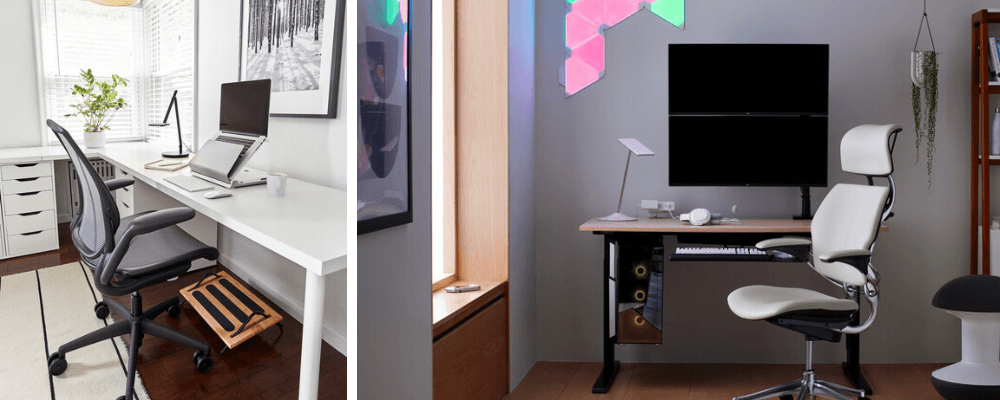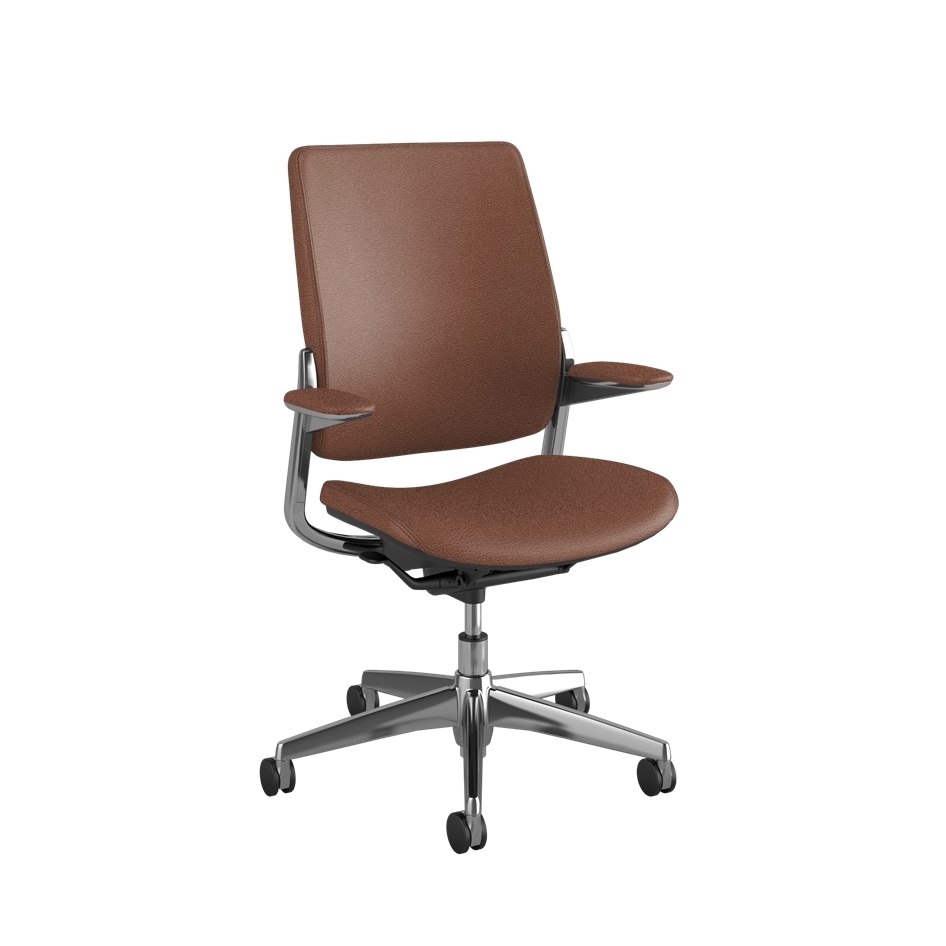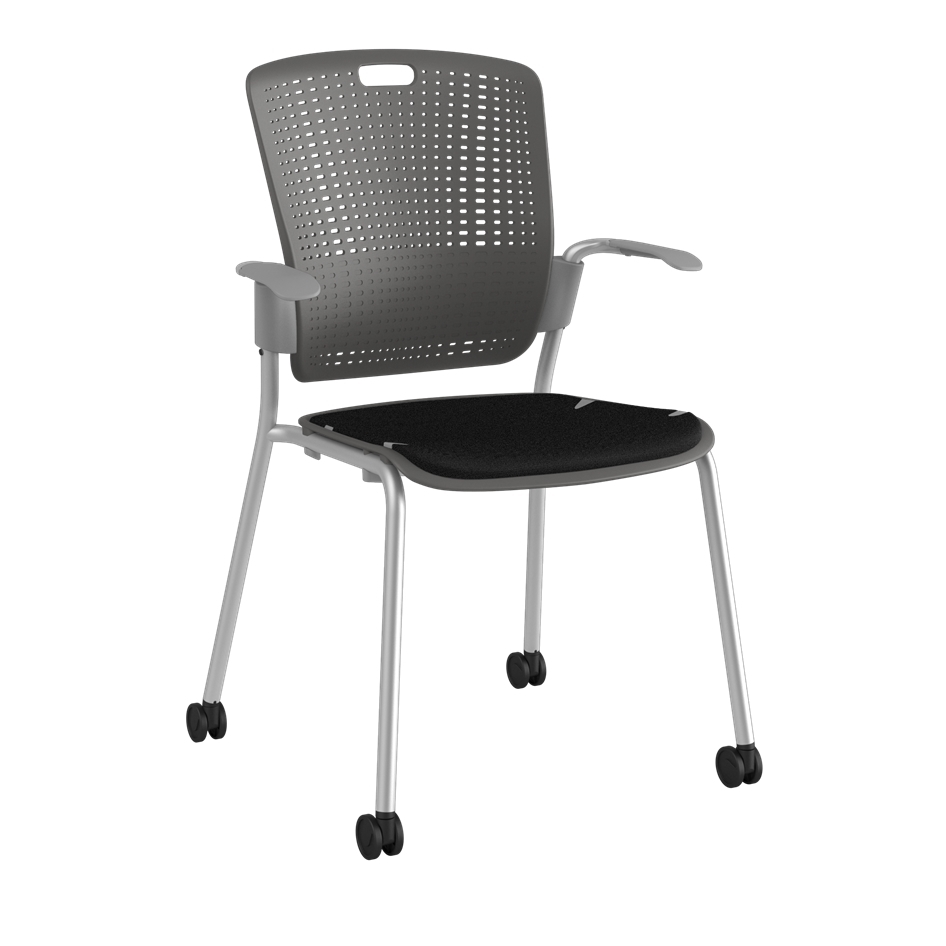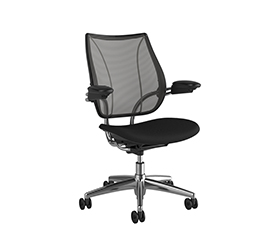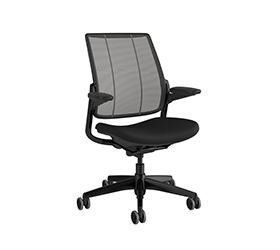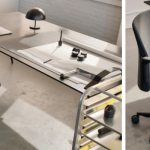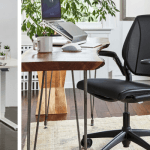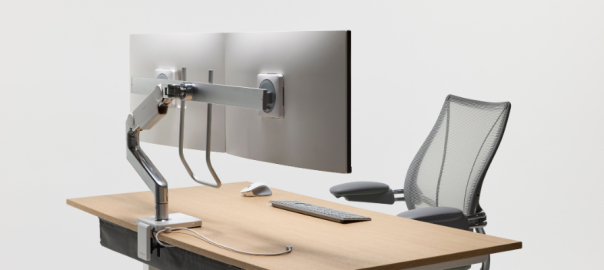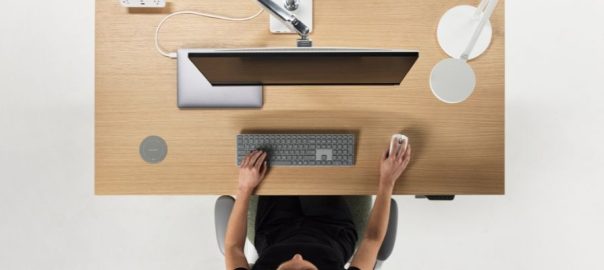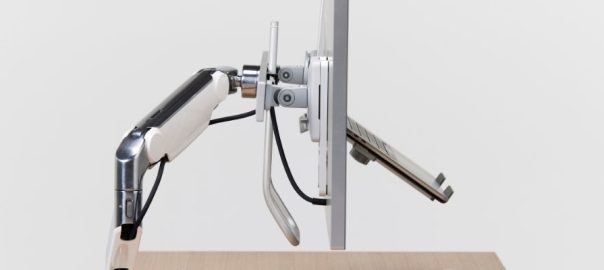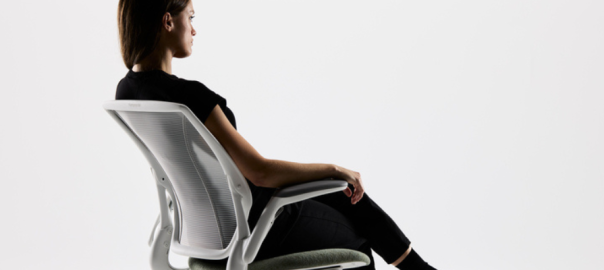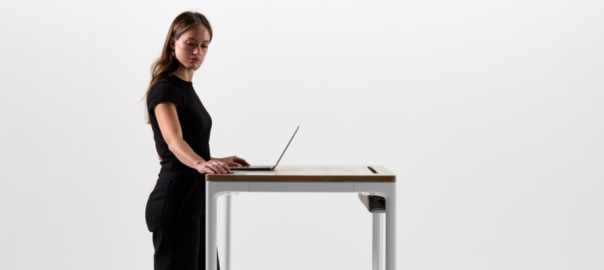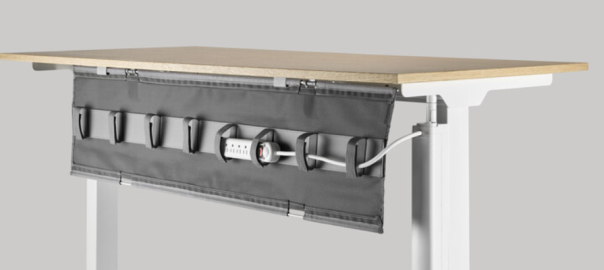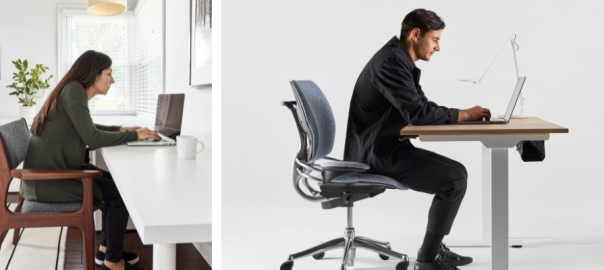As remote work becomes common, many of us realize that our kitchen tables and couches aren’t suitable as makeshift home offices. But don’t worry – creating an ergonomic work-from-home setup doesn’t have to be complicated or expensive.
In this guide, we’ll walk you through everything you need to know to transform your space into a comfortable, efficient home office. From choosing the right type of office chair to optimizing your lighting, we’ve got you covered. So, what are you waiting for? Read along!
Work-from-Home Setup Essential Equipment Needed
Design a workspace that supports your body and keeps you productive throughout the workday. Implementing the benefits of ergonomics in the workplace can lead to improved health, increased productivity, and reduced risk of injury. So, let’s explore the key equipment you’ll need to transform your regular office into an ergonomic work-from-home office setup:
Choosing the Right Desk
Your desk is where you’ll spend most of your working hours, so choosing the right one is crucial. When selecting a desk, consider:
- Height: Opt for an adjustable desk that allows you to switch between sitting and standing. This flexibility can help lower the health risks associated with prolonged sitting.
- Size: A cluttered desk can lead to stress and reduced productivity. So, ensure your office desk setup is large enough to accommodate your equipment without feeling cramped.
- Material: Look for sturdy materials that can support your gear and withstand daily use. Quality materials also tend to look better and last longer.
Bonus Tip: Consider the layout of your workspace when choosing your desk. L-shaped desks can be great for corner spaces, while compact writing desks might be perfect for smaller rooms. If you need storage, look for desks with built-in drawers or cabinets.
The Perfect Ergonomic Chair
Your chair can make or break your work-from-home experience. The benefits of ergonomic chairs include body support, good posture, and reduced ergonomic hazards and other issues related to prolonged sitting. Here’s what to look for:
- Adjustable height and backrest, allowing you to customize the chair to your body size and desk height.
- The best chair for lower back pain at home has lumbar support to maintain proper spine curvature.
- Armrests that allow your shoulders to relax, reducing shoulder and neck tension.
- A seat depth that supports your thighs without pressing against the back of your knees. This promotes good circulation in your legs.
- Multiple adjustment points – the more adjustable the chair, the more likely you are to find a comfortable position.
Also, consider the material of the chair as well – mesh backs can provide good ventilation, while padded seats offer cushioning for long work sessions.
Bonus Tip: Remember that even the best ergonomic chair isn’t meant for all-day sitting. So, make sure to stand up, stretch, and move around regularly throughout your workday. 1
The Monitor Stands
Proper monitor placement is crucial for preventing neck strain and maintaining good posture. When setting up your monitor, consider:
- Adjustable monitor arms for flexibility: Ergonomic monitor arms allow you to easily change the height, angle, and distance of your screen.
- Stands that bring your screen to eye level: Stands that elevate your monitor to eye level ensure a comfortable viewing experience. The top of your screen should be slightly below eye level to prevent neck strain.
- Dual monitor setups if you frequently multitask: If you juggle multiple tasks and utilize a dual monitor arm or setup, ensure both screens are positioned at the same height and angle.
Bonus Tip: For those who wear bifocals or progressive lenses, you might need to position your monitor slightly lower to avoid tilting your head back to see through the bottom portion of your glasses.
Cable Management Trays
A clutter-free workspace isn’t just aesthetically pleasing—it’s safer and more efficient. Proper cable management can reduce stress, prevent accidents, and help keep your workstation tidy. Hence, use:
- Under-desk cable trays/cable organisers to keep wires organized: These attach to the underside of your desk and hold cables out of sight.
- Cable clips to guide cords along your desk edge: These small adhesive clips can keep individual cables in place and prevent them from tangling.
- Velcro ties to bundle cables together: These reusable ties are perfect for grouping multiple cables together.
Bonus Tip: Use colored cable ties or labels to quickly distinguish between power, video, and data cables. Moreover, for a truly minimal look, explore wireless options for your keyboard, mouse, and other peripherals. This can significantly reduce cable clutter on and around your desk.
Keyboard Trays
A good Under Desk keyboard tray can help prevent repetitive strain injuries and improve your typing posture. Look for:
- Adjustable trays that allow for negative tilt: It can be tilted downward from the horizontal plane, helping to position your keyboard at an ergonomic angle, reducing strain on your wrists, and improving comfort during use.
- Padded wrist rests for added comfort: These provide support for your wrists during breaks in typing.
- Wide trays that accommodate both keyboard and mouse: This ensures your mouse is at the same ergonomic level as your keyboard.
Bonus Tip: If you don’t have space for a keyboard tray, ensure your desk is at a height where your elbows are at a 90-degree angle when typing.2
You could also invest in an ergonomic keyboard that splits the keys into two angled sections. This design can help keep your wrists in a more natural position while typing.
Footrest
Don’t forget about your feet! A good under desk footrest can significantly improve your overall sitting posture and comfort. Here’s why it’s important:
- Promotes better circulation: By elevating your feet slightly, a footrest can help improve blood flow in your legs.
- Reduces pressure on your lower back: Proper foot positioning can help maintain the natural curve of your spine.
- Allows for subtle movement throughout the day: Many footrests allow for rocking or other small movements, which can help keep you active even while sitting.
So, choose an adjustable footrest to find the perfect angle for your comfort. For example, if you’re tall, you might not need a footrest if your feet can comfortably reach the floor with your chair adjusted to the proper height. However, if you’re shorter or your desk isn’t adjustable, a footrest can be a game-changer for your comfort.
Bonus Tip: Consider a balance board as an alternative to a traditional footrest. These allow for more active movement throughout the day, which can help improve core strength and overall posture.
Higher-End Headset
A work-from-home office setup is no excuse to miss those countless Zoom meetings, right? Even if it’s in your pyjamas from the comfort of your home! So, why not invest in a quality headset for clear communication and reduced neck strain? When choosing a headset, look for:
- A lightweight, wireless headset: This allows for freedom of movement and reduces cable clutter.
- Noise-cancelling features for better focus: This can help you concentrate in noisy environments and improve call quality.
- Adjustable microphone for optimal positioning: This ensures clear audio without having to strain your neck or speak unnaturally loudly.
- Long battery life if you’re on calls frequently: Some models offer 20+ hours of talk time on a single charge.
Bonus Tip: Look for headsets with comfortable ear cushions if you’ll be wearing them for extended periods. Over-ear designs can be more comfortable for long-term use than in-ear models.
Ergonomics Beyond Furniture – Optimising Your Work Habits
Creating an ergonomic home office desk setup isn’t just about having the right ergonomic furniture; it’s also about developing habits and practices that support your physical and mental health during office hours.
By optimizing your work habits, you can enhance your productivity, reduce stress, and maintain better overall health. But how can you do this? Let’s find out.
Posture and Movement
Your posture plays an important role in preventing fatigue and physical strain. Maintaining good posture isn’t about sitting rigidly in one position but rather about creating a dynamic and supportive environment for your body. Here’s how to maintain good posture: 3
- Sit with your feet flat on the floor or a footrest. This helps distribute your weight evenly and gives a stable base for your body.
- Keep your knees at or slightly below hip level. This position helps maintain the natural curve of your spine and reduces pressure on your lower back.
- Maintain a small gap between the back of your knees and the chair. This prevents pressure on the back of your thighs, which can impede circulation.
- Position your lower back against the chair’s lumbar support. This helps maintain the natural curve of your spine and prevents slouching.
- Keep your shoulders relaxed and elbows close to your body. This reduces the pressure on your neck and shoulders.
Remember, even perfect posture shouldn’t be held static for too long. Our bodies are made for movement, and prolonged static postures can lead to discomfort and potential health issues.
So, consider incorporating “micro-movements” into your work routine. These are small, frequent changes in position that can help keep your body active even while you’re focused on work. For example, you might shift your weight, change your foot position, or do small seated twists periodically throughout the day.
Taking Breaks and Staying Active
Regular breaks are essential for both your physical and mental health. They help prevent eye strain, reduce muscle tension, and boost productivity. When you work continuously without breaks, you’re likely to experience a decline in performance and increased fatigue. Try these strategies:
- Follow the 20-20-20 rule: Every 20 minutes, try to focus on something that is 20 feet away for 20 seconds. This reduces eye strain and gives you a chance to refocus. 4
- Take breaks: After every hour to two, take a 5-10 minute break to stand up and move around. Use this time to stretch, walk, or do some light exercises. This helps improve circulation and reduces the risks associated with prolonged sitting.
- Use break time for quick exercises like desk stretches or a short walk: Even a brief burst of physical activity can help refresh your mind and body.
However, it’s easy to lose track of time when you’re focused on work. So, consider using a timer app to remind you to take breaks. Some apps even guide you through quick stretching or exercise routines designed for office workers.
Creating a Routine
When you work from home, the lines between work and personal life can easily blur. Instead, a well-structured routine can help you stay productive during work hours and fully disconnect during your personal time. Try to:
- Start and end your workday at the same time each day: This helps create a clear boundary between work and personal time.
- Schedule regular breaks and stick to them: Treat these breaks as important appointments with yourself.
- Plan your most demanding tasks for when you’re most alert: Identify your peak productivity hours and schedule your most challenging work during these times.
To further enhance this, you can create a dedicated workspace that you can “leave” once you log off work. If you don’t have a separate home office, even a specific corner of a room that you use only for work can help create a mental separation between work and home life.
Lighting
Poor lighting can lead to headaches, eye fatigue, and decreased productivity. Whereas, proper lighting is crucial for reducing eye strain and maintaining energy levels. To incorporate this in your workspace, here are a few tips:
- If possible, set up your workspace near a window. Natural light has been shown to improve mood and productivity.
- A desk lamp with adjustable brightness can help you maintain optimal lighting throughout the day.
- Position lights correctly to avoid glare on your screen. Ensure that light sources aren’t directly behind or in front of your screen.
- Consider using a light therapy lamp, especially during darker months. These lamps can help regulate your circadian rhythm and boost your mood. 5
If you work late, use blue light filters on your devices to help maintain your natural sleep cycle. Many devices now have built-in blue light filters, or you can download apps that adjust your screen’s colour temperature based on the time of day.
Plants
Adding greenery to your workspace can have surprising benefits that go beyond aesthetics:
- Improved air quality: Many indoor plants act as natural air purifiers, removing toxins from the air.
- Reduced stress levels: Studies have shown that being around plants can lower stress and anxiety levels. 6
- Increased productivity and creativity: Being around plants has been linked to improved focus and creative problem-solving.
But remember to choose low-maintenance plants like succulents, snake plants, or peace lilies so that you don’t have to spend a lot of your time taking care of them.
Conclusion
By carefully selecting and arranging these elements, you’ll create a work-from-home setup that not only looks great but also supports your health. Also, the features in high-quality ergonomic chairs help increase productivity.
Remember, the key is to personalize your space to fit your needs and work habits. Don’t be afraid to experiment and make adjustments as you go – your perfect ergonomic setup might take some fine-tuning to build. Creating an ergonomic laptop/desktop setup at home can significantly improve your comfort and productivity while working remotely.

